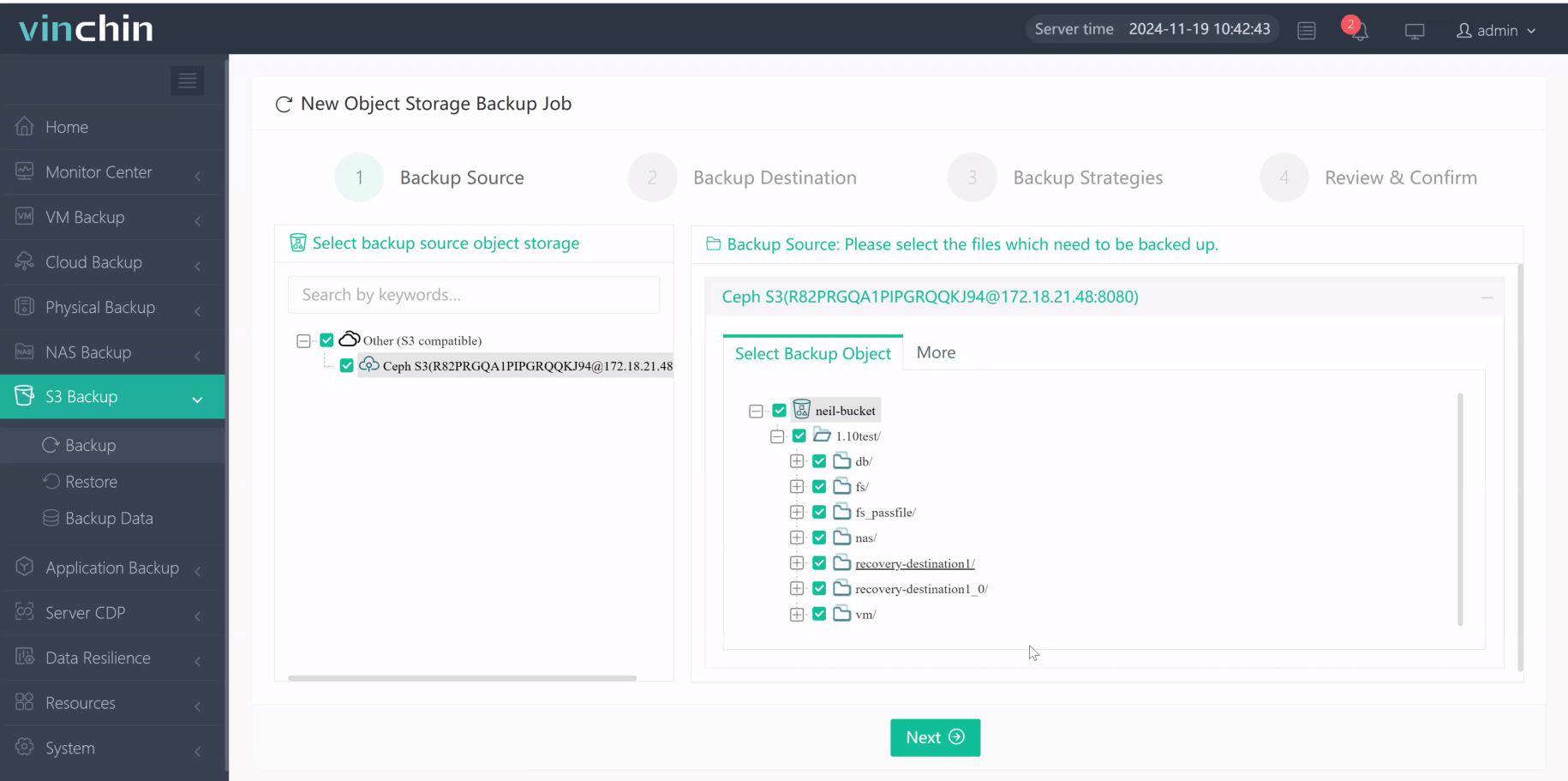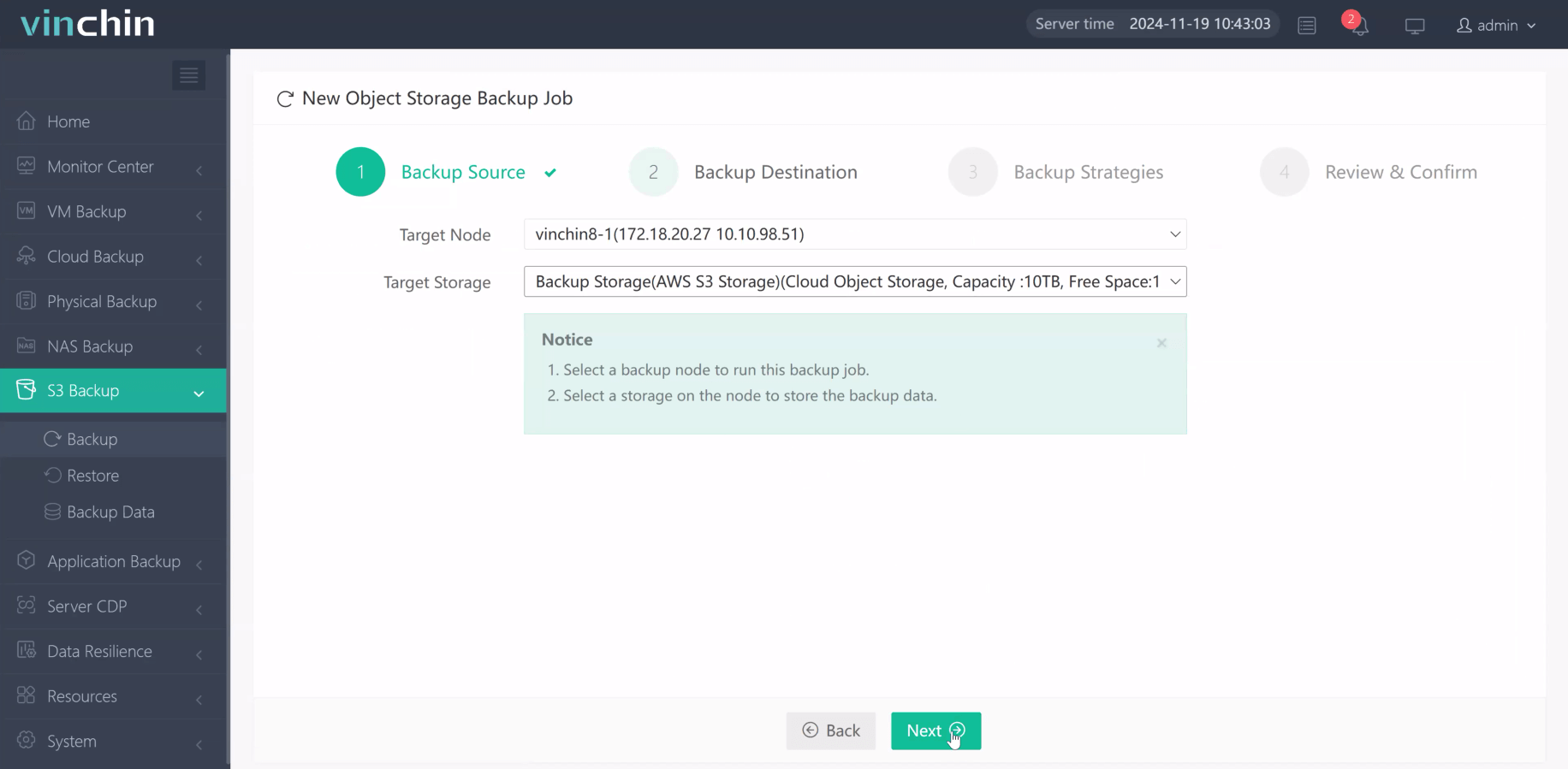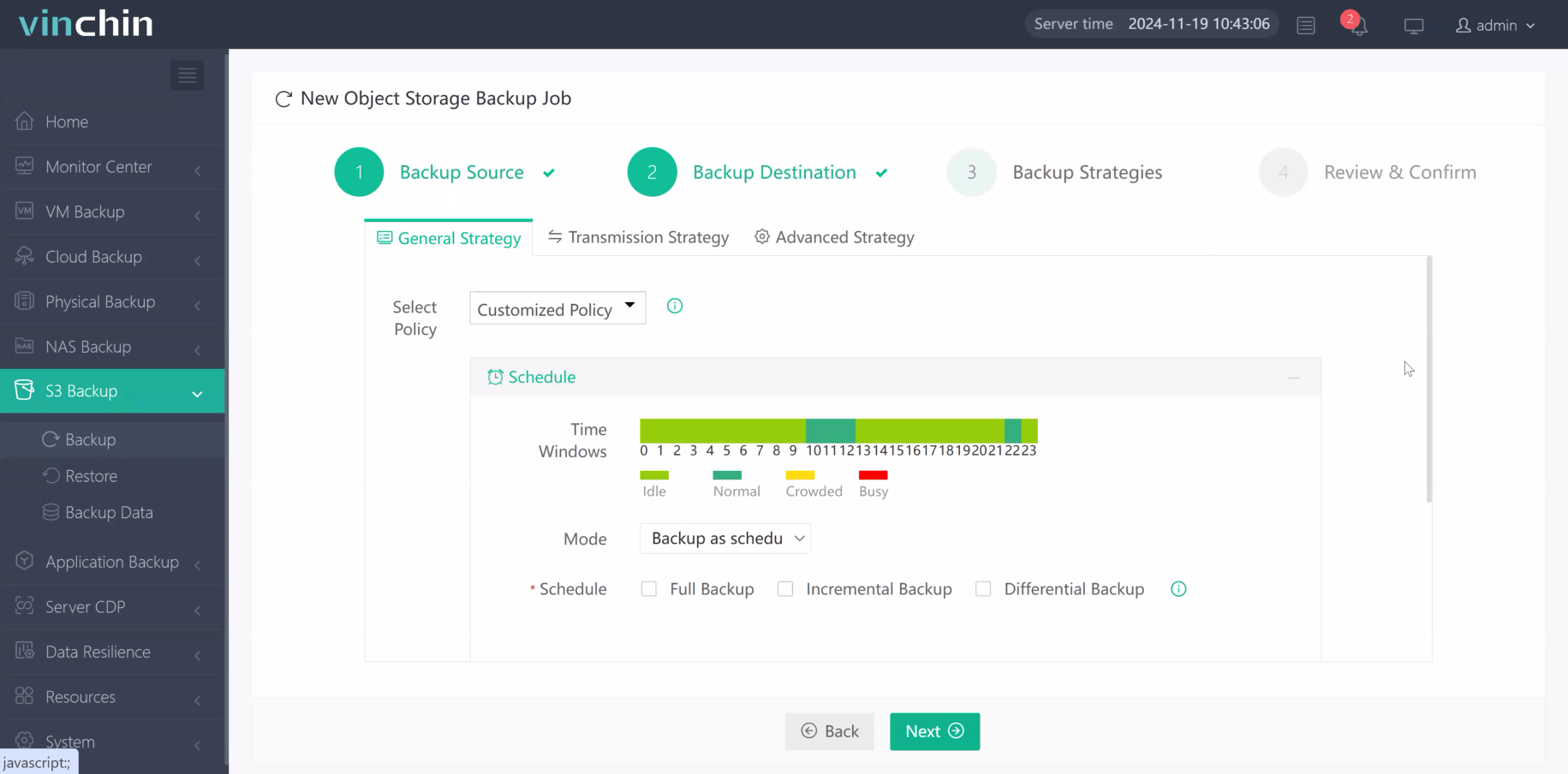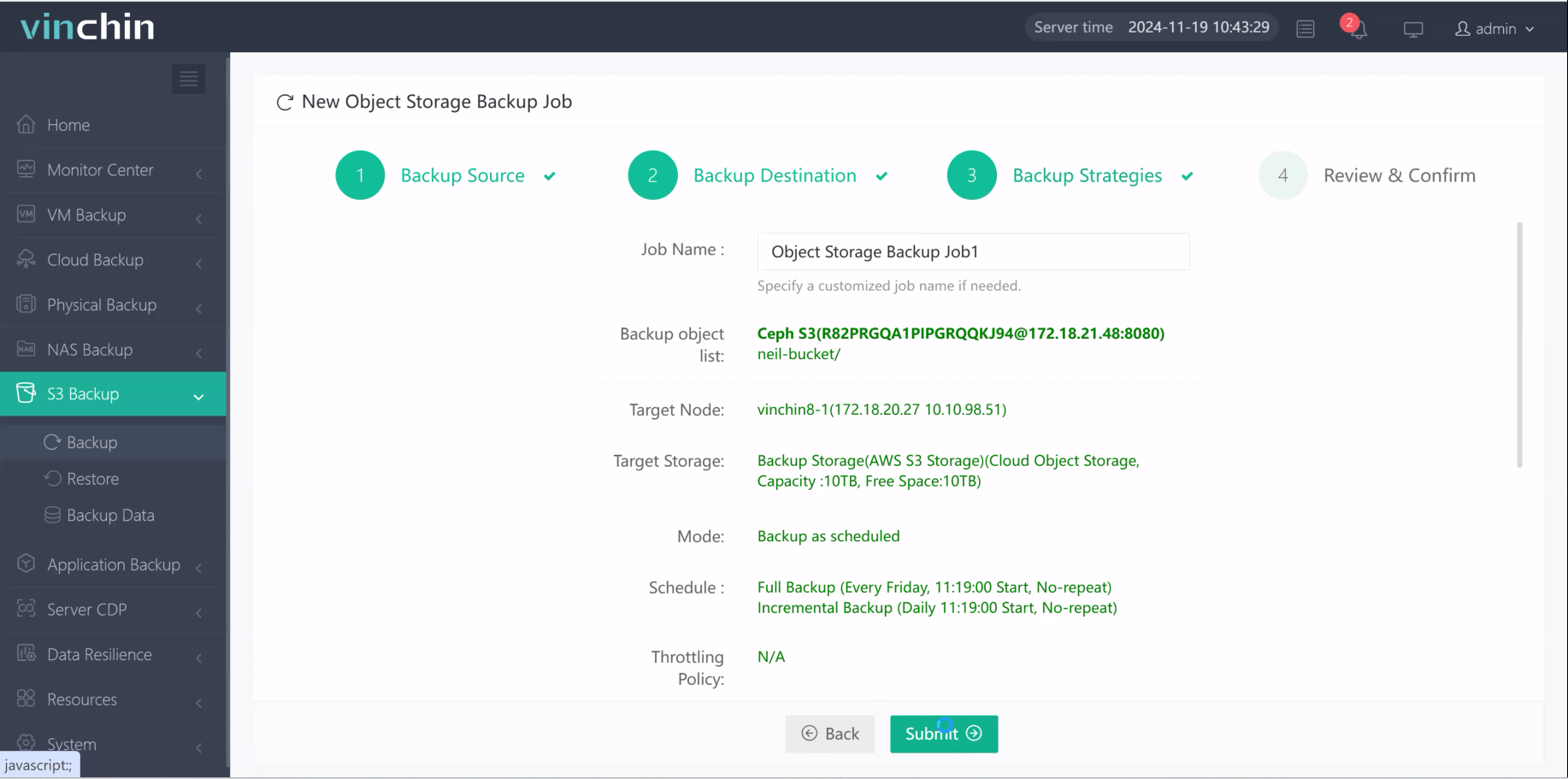-
What Is S3 Object Versioning?
-
Why Use S3 Object Versioning?
-
How to Enable S3 Object Versioning via AWS Management Console?
-
How to Enable S3 Object Versioning via AWS CLI?
-
How to Enable S3 Object Versioning via Python (boto3)?
-
Enterprise File Protection Beyond Native Tools: Introducing Vinchin Backup & Recovery
-
S3 Object Versionning FAQs
-
Conclusion
Data loss can strike at any time—accidental deletion, overwrites, or even malicious actions can put your business at risk. For operations administrators managing cloud environments, protecting critical files is a top priority. Amazon S3 object versioning offers a powerful way to safeguard your data against these threats. In this guide, you’ll learn what S3 object versioning is, why it matters, how to enable it using different methods, how to manage versions effectively—including advanced features—and how Vinchin can take your file protection further.
What Is S3 Object Versioning?
S3 object versioning is an Amazon Simple Storage Service (S3) feature that keeps multiple versions of each object in a bucket. When you enable versioning on a bucket, every upload or modification creates a new version with its own unique ID. Even deletions don’t erase data—instead, S3 adds a delete marker so you can recover objects if needed.
Versioning operates at the bucket level; once enabled for a bucket, all new uploads or changes are tracked as separate versions from that point forward. Existing objects before enabling versioning keep a "null" version ID until they’re updated or deleted.
This system gives you fine-grained control over your data’s history—essential for troubleshooting mistakes or recovering from disasters.
Why Use S3 Object Versioning?
Why should operations administrators care about S3 object versioning? The answer comes down to protection and flexibility:
You can restore files accidentally deleted or overwritten by users or applications.
If someone deletes an object by mistake (or intentionally), S3 places a delete marker rather than removing the file outright—you simply remove this marker to bring back the latest version.
Every change is tracked with its own timestamped ID—creating an audit trail that helps meet compliance requirements.
Enabling S3 object versioning increases durability and supports disaster recovery strategies across industries.
However, there’s no free lunch: storing multiple versions increases storage costs over time unless managed carefully—a topic we’ll cover shortly.
How to Enable S3 Object Versioning via AWS Management Console?
The AWS Management Console provides an intuitive way to turn on S3 object versioning:
First sign in to the AWS Management Console and open the Amazon S3 service dashboard. Click on your target bucket name from the list of buckets shown on screen.
Next go to the Properties tab within that bucket’s page. Scroll down until you see Bucket Versioning, then click Edit beside it.
Select Enable, then click Save changes at the bottom of this section.
From now on all new uploads or modifications in this bucket are tracked as separate versions automatically—even if users try deleting them later! Note: Once enabled you cannot fully disable S3 object versioning; you may only suspend it so future uploads aren’t tracked as versions (existing ones remain).
How to Enable S3 Object Versioning via AWS CLI?
For automation fans—or anyone managing many buckets—the AWS Command Line Interface (CLI) makes enabling S3 object versioning fast:
Open your terminal window or command prompt where AWS CLI is installed.
Type:
aws s3api put-bucket-versioning --bucket your-bucket-name --versioning-configuration Status=Enabled
Replace your-bucket-name with your actual bucket name.
To check status after enabling:
aws s3api get-bucket-versioning --bucket your-bucket-name
This approach works well when scripting changes across multiple environments—saving time compared with manual clicks in each console session!
How to Enable S3 Object Versioning via Python (boto3)?
Python automation is popular among operations teams—and boto3 makes working with S3 object versioning easy:
import boto3
from botocore.exceptions import ClientError
s3 = boto3.client('s3')
bucket_name = 'your-bucket-name'
try:
# Enable versioning
s3.put_bucket_versioning(
Bucket=bucket_name,
VersioningConfiguration={'Status': 'Enabled'}
)
# Check status
response = s3.get_bucket_versioning(Bucket=bucket_name)
print(response)
except ClientError as e:
print(f"Error occurred: {e}")Swap out your-bucket-name for yours before running this script—it enables tracking of all future changes in that bucket while printing confirmation output (and catching errors). Want to list all existing versions? Use list_object_versions method:
response = s3.list_object_versions(Bucket=bucket_name)
for obj in response.get('Versions', []):
print(obj['Key'], obj['VersionId'])This lets you programmatically retrieve every object's history—a must-have for large-scale audits or restores!
Enterprise File Protection Beyond Native Tools: Introducing Vinchin Backup & Recovery
Given these native limitations, organizations seeking comprehensive protection and performance often look beyond built-in solutions. Vinchin Backup & Recovery stands out as an enterprise-grade file backup solution supporting most mainstream file storage platforms—including Windows/Linux file servers, NAS devices, and notably Amazon S3-compatible object storage. For businesses leveraging Amazon S3 buckets, Vinchin Backup & Recovery delivers exceptionally fast backup speeds thanks to proprietary technologies such as simultaneous scanning/data transfer and merged file transmission—outpacing other vendors significantly.
Among its extensive capabilities are incremental backup support, wildcard filtering for precise selection criteria, bandwidth throttling policies for network efficiency, multi-level compression options for reduced storage consumption, and robust encryption ensuring secure backups across environments. These features together provide reliable performance optimization while simplifying compliance management.
Vinchin Backup & Recovery offers an intuitive web-based console designed for ease-of-use throughout the backup process. Protect files stored in Amazon S3-compatible buckets typically by following four streamlined steps:
Step 1. Select the Amazon S3 files to backup

Step 2. Choose the backup storage

Step 3. Define the backup strategy

Step 4. Submit the job

Trusted worldwide by thousands of enterprises—with top ratings and global recognition—Vinchin Backup & Recovery offers a risk-free 60-day full-featured trial. Click below to experience industry-leading data protection firsthand!
S3 Object Versionning FAQs
Q1: How does enabling S3 object versioining affect my monthly bill?
Every additional revision counts toward total storage used; set up lifecycle rules targeting old/non-current copies for automatic cleanup if costs rise unexpectedly.
Q2: Can versioining help me meet regulatory retention requirements?
Yes—with proper configuration it preserves historical records indefinitely supporting legal/compliance audits across most industries worldwide.
Q3:How do I recover an overwritten document quickly?
Go into Amazon S3,select affected file,click Show Versions,choose desired timestamp/version,then hit Download/Restore—all done within seconds!
Conclusion
S3 object versioining delivers strong defense against accidental loss while supporting compliance needs—but true peace-of-mind comes from pairing native tools with enterprise-grade backup like Vinchin’s solution for complete coverage across workloads big-and-small alike!
Share on:







